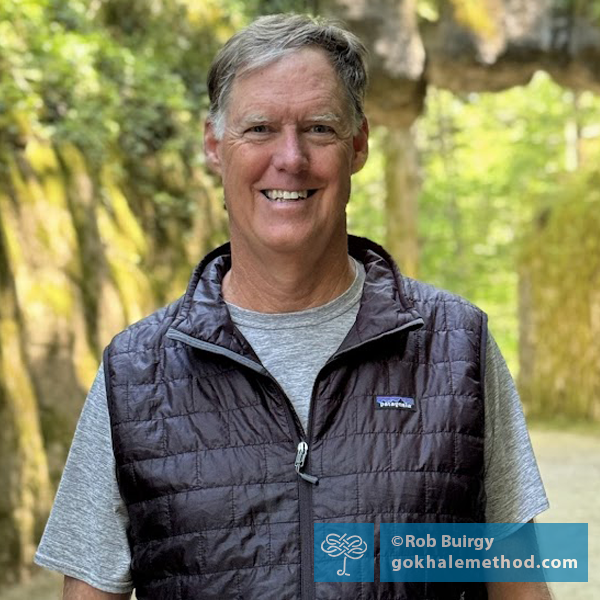Rob Buirgy reached out having sustained a multiple fragment compression fracture of his T12 vertebra (in the middle of the back). Despite being in a body brace afterwards, having already followed the Gokhale Method for a couple of years, Rob’s instinct told him that our method would be able to help him regain an active life. More recently, he has also fully recovered from a whole knee replacement. In this blog post he explains how healthy posture set him up for success…
—Esther Gokhale
Kathy Nauman Success Story
In 2014, at age sixty-four, I began to experience pain in my left hip that eventually became quite debilitating. For the first time in my life, I went to a chiropractor, which resulted in relief that lasted a couple of years. By 2015 I had consulted first one, then a second orthopedic surgeon, who recommended a hip replacement due to osteoarthritis.


